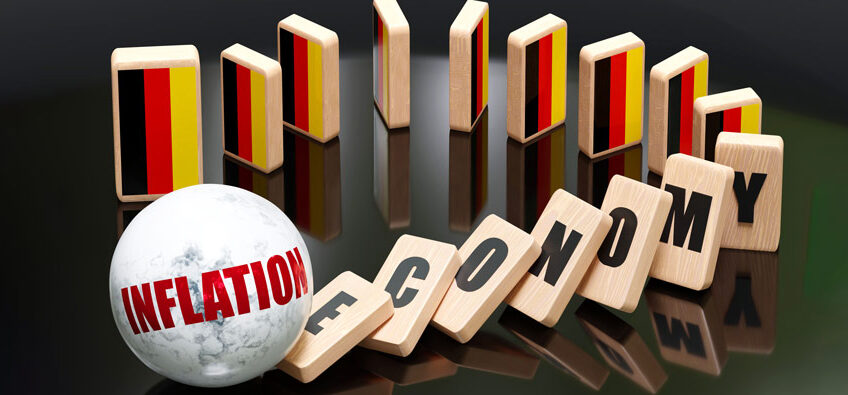
German Inflation Redux

This is one of the most shocking charts we have seen this year. It shows that Eurozone Producer Prices, or wholesale prices, have climbed 31.4 percent for the 12 months through February.
Revolutions have been made of less!

US News reports that “energy prices were up 83.8% from March 2021… The main driver of that increase was the strong price increase in natural gas, which was up 144.8% on the year.”
Germans have long a deep and persistent aversion to inflation, a remnant of the brutally ruinous monetary inflation of Weimar Republic Germany a century ago, the calamity that paved the way for Naziism and Hitler.
Everyone who want to see how inflation can ruin even a modern, industrial economy should read my new book REAL MONEY FOR FREE PEOPLE: The American Gold Story. From the book, here is a short description of events in Germany from the period featuring the Jerome Powell of his day, Rudolf von Havenstein:
At the beginning of the period [in 1919] one gold mark was worth about 100 paper German marks. By November 1923, one gold mark was equal to about 100 trillion paper German marks. It cost 36 billion marks to send a postcard from Munich to Prague. The cost of a loaf of bread, only about one mark before the debacle, eventually rose to 200 billion marks. No wonder: at the peak of the madness there were 30 paper mills, 150 printing firms, and 2,00o noisy printing presses cranking out von Havenstein’s currency.
It makes today’s quiet and easy electronic money printing look positively sophisticated, although ours is the same old flim-flam dressed up for the digital age. Unbacked currency, whether paper or digital, is not wealth. It is instead only an accounting fraud, one that masks its intended function of transferring wealth.
Despite the license to print currency without limitation, the German State was so desperate for currency other than its own, that in September 1923 police raided restaurants and nightclubs in Berlin, searching the wallets and purses of customers for foreign cash.
As conditions deteriorated, one Berlin newspaper asked if von Havenstein understood that Germany’s workers could starve. But Havenstein insisted all along that prices spinning out of control and the mark’s collapsing exchange rate were unrelated to his furious money-printing. At the end of the monetary tragedy von Havenstein died, apparently coincidentally.
The affair decimated the German economy and radicalized the people. Crime proliferated: gasoline was siphoned from parked cars; prostitution flourished; urban dwellers stormed the farms of the countryside looking for food. With the social fabric shredded, the central bank’s benchmark interest rate at 90 percent, and the unemployment rate nearing 25 percent (soon to be 30 percent), the first of the Nazis’ infamous Nuremberg rallies was held in September 1923. Thirty-four-year-old Adolf Hitler spoke to a crowd a hundred thousand strong.
If you would like to have a free copy of this important book, written to prepare you for what happens next in America’s developing monetary crisis, stop by our offices. And be sure to speak with a Republic Monetary Exchange gold and silver professional about the steps you must take to protect your family and your wealth.
